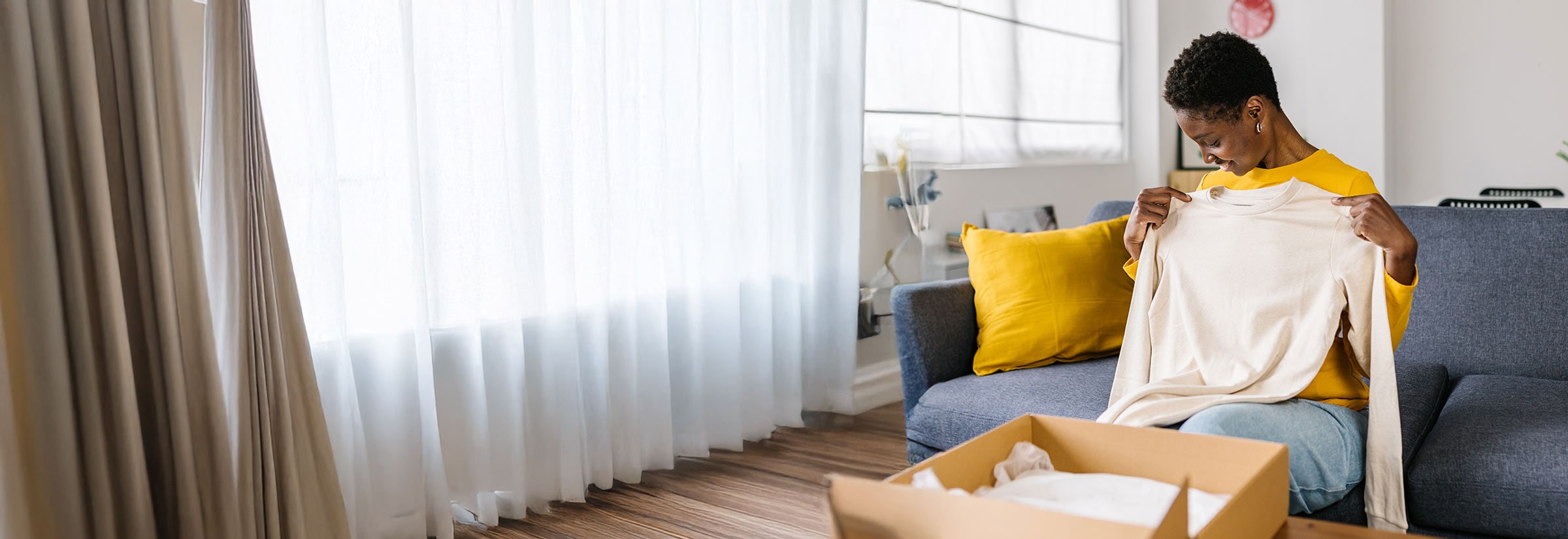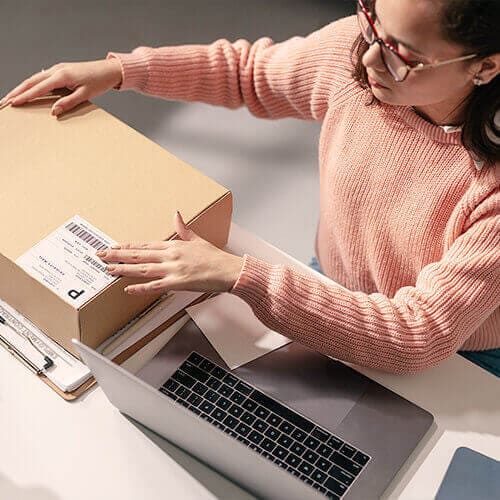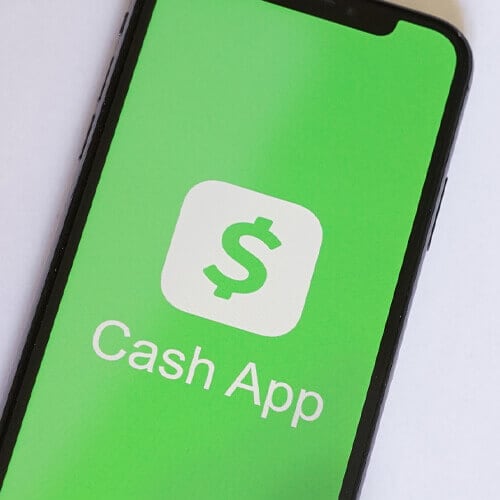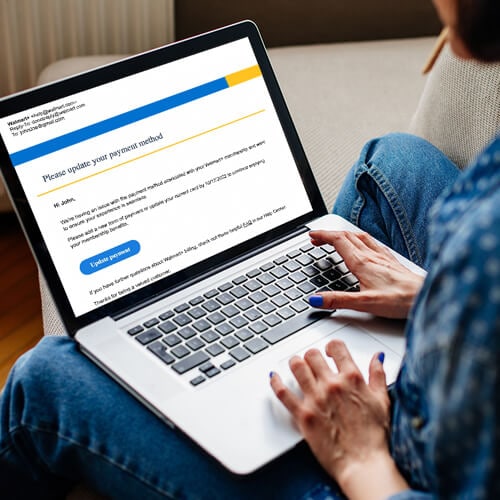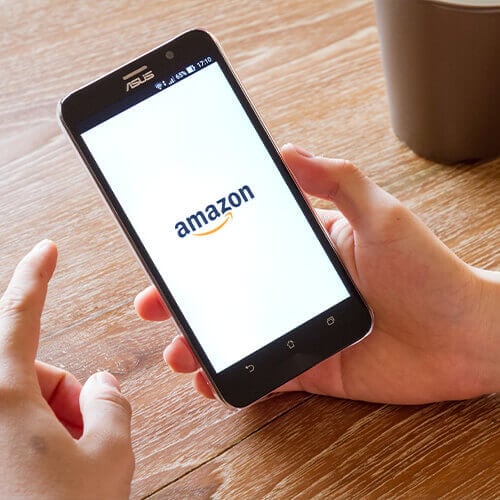DEPOP is a trademark of DEPOP LTD.
Combining fashion, thrifting, and social media into one platform, Depop has become a go-to marketplace for Gen Z. With nearly 45 million registered users, the app is extremely popular. But is Depop trustworthy? Keep reading for a breakdown of the platform’s safety features, and learn how to avoid common Depop scams.
Is Depop safe to buy from?
Depop is mostly safe to buy from as long as you pay through the app or website using the “Buy” button — these purchases are protected through Depop Purchase Protection. This protection offers a refund if an item doesn’t arrive, arrives damaged, or isn’t as described. Just remember to report the issue within 30 days of the purchase.
It’s best to use secure, in-app payment methods, since these payments are tracked and protected. Payments made outside the Depop app, like direct bank transfer transactions, are considered off-platform and aren’t covered by buyer protection.
Is Depop safe to sell on?
Depop is generally safe to sell on if you use Depop shipping labels, which come with built-in tracking and make you eligible for Depop Protection for sellers. This protection covers sales up to $300 if an item is lost or damaged during shipping, as long as it was sold through the app, shipped within five days, and sent to the buyer’s listed address.
To stay covered, sellers must also respond to Depop’s support requests.
Can you get scammed on Depop?
Yes, you can get scammed on Depop, like any online marketplace. Common scams include fake listings, off-platform payment requests, and sellers who don’t ship items. These scams can result in lost money or compromised personal information, which may lead to identity theft.
7 common Depop scams
Here’s a closer look at common Depop scams you may encounter on the platform and tips for spotting a scammer.
1. Off-platform requests
Off-platform scams, like Venmo scams, happen when someone asks you to communicate or pay outside of Depop through platforms like Venmo, WhatsApp, or bank transfer. These scams often involve fake listings or payment links; once money is sent, it’s usually gone for good since it’s not protected by Depop.
Scammers may offer discounts to lure buyers or trick new sellers into giving up sensitive information through fake payment pages. Always use Depop’s in-app payment system and messaging to stay protected.
2. Phishing emails
Depop phishing email scams involve fake emails that look like they’re from Depop but are actually sent by scammers. These emails often claim there’s a problem with your account or payment and include links to fake websites designed to steal your login or financial information.
To spot a phishing email, check for spelling errors, suspicious sender addresses, and urgent language. Always log in directly through the Depop app or website instead of clicking links in unexpected messages.


3. Trading scam
Trading on Depop means exchanging items directly with another user instead of buying or selling for money. This process is risky because Depop doesn’t offer protection for swaps.
Scammers often take advantage of this by agreeing to a trade but never sending their item, effectively getting free goods. One Redditor shared that they traded two items with a new user who had no reviews or past sales. The scammer provided a tracking number, but it showed the package was delivered back to their own address. Soon after, they deleted their account, ending all contact.
To avoid this scam, don’t trade on Depop. Since trades aren’t protected, there’s no way to recover your item if the other person doesn’t hold up their end of the bargain.
4. Return scam
Return scams happen when a buyer claims an item is damaged or not as described and asks to return it for a refund. But instead of sending the original item back, they return a different, cheaper, or damaged version. This leaves the seller without the item and out of the money from the sale.
To avoid this scam, document everything before shipping. This means taking clear photos of the item, its condition, and your packaging. If a return is requested, ask for photos first and keep all proof in case you need to involve Depop support.
5. Wrong address scam
Wrong address scams happen when a buyer asks for an item to be sent to a different shipping address than the one listed on the Depop transaction, such as a neighbor’s house or an abandoned property. They’ll then claim the item never arrived. The scammer’s goal is to get a refund while still receiving the item.
To avoid this, always ship to the address listed on the Depop transaction and use tracked shipping. If a buyer later claims the item was sent to the wrong address, provide Depop with the tracking info and proof that you shipped to the correct address listed in the app.
6. Fake listings
Some Depop scammers create fake listings using stolen photos or vague descriptions to trick buyers into paying for items that don’t exist. These scammers usually disappear after receiving payment, especially if it’s made outside the app.
Watch for new accounts with no reviews, unusually low prices, or pressure to pay via Venmo or Cash App. Also, perform a reverse image search. The seller may have posted stolen images if the same photos appear on other sites.
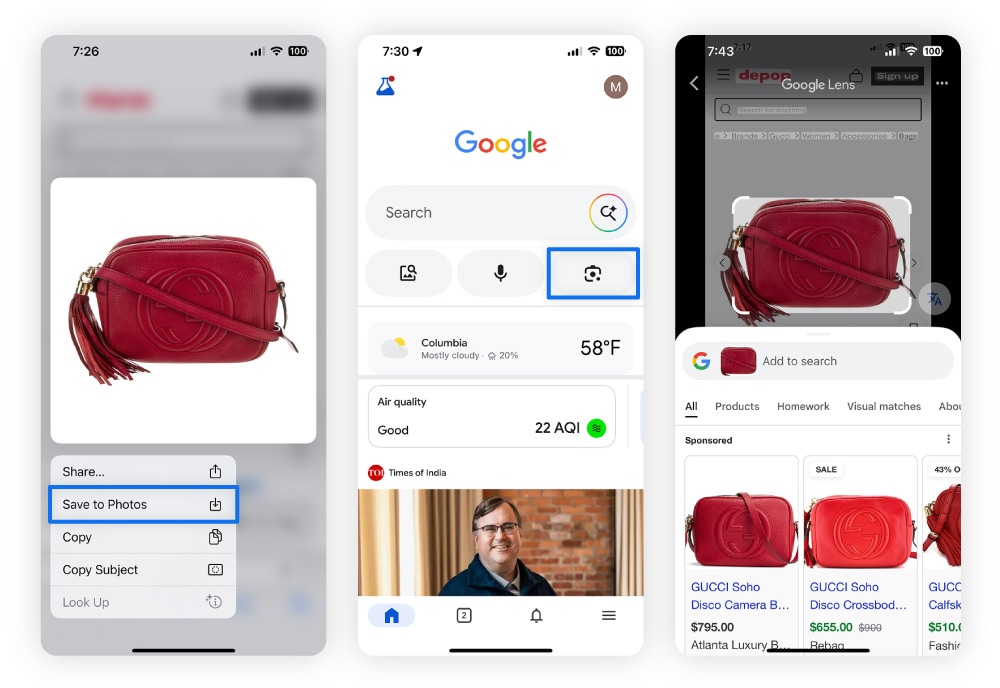

7. Bait-and-switch scams
In a bait-and-switch scam, a seller lists one item, often something of high value, then ships something entirely different, either a cheaper or unrelated product. The goal is to trick the buyer into confirming receipt while keeping the money.
One Reddit user paid $160 for Birkenstock clogs and received jeans instead. The seller blocked them, and despite following Depop’s return process, the buyer struggled to get a refund because they couldn’t prove what was inside the returned package.
To avoid this scam, always photograph the item you receive and return inside and outside the packaging before filing a dispute with Depop, and stick to sellers with strong reviews and verified sales.
How to shop safely on Depop
To shop safely on Depop, keep all conversations and purchases on the app and watch out for social engineering tricks like contrived urgency or too-good-to-be-true deals.
Follow these tips to better protect yourself while shopping:
- Stay on the platform: Only message and pay through Depop to stay covered by buyer protection.
- Check seller reviews: Look for positive feedback, the number of completed sales, and active profiles before buying.
- Use reverse image search: Right-click a photo and select Search with Google Lens to check if it appears on other websites. If it shows up in multiple places or on retail sites, it could be a stolen image used in a fake listing.
- Avoid deals that seem too good to be true: Unrealistically low prices are often a red flag for scams.
How to sell safely on Depop
Many of the same tips for shopping safely on Depop also apply to selling. To keep your sales protected, always communicate and complete transactions within the app.
Follow these tips to better protect yourself when selling:
- Only sell items directly through Depop: This ensures you’re protected by Depop’s seller policies and payment system.
- Track all shipments: Always use tracked shipping so you have proof of delivery if a buyer disputes the order.
- Don’t trade: Depop doesn’t protect trades, and scammers take advantage of this loophole.
- Avoid clicking suspicious links: If someone sends you a link that looks odd or asks for shipping verification, don’t click — it could be a phishing attempt.
What to do if you fall for a Depop scam
If you’ve already fallen for a Depop scam, taking a few precautions like alerting your bank, changing passwords, and enabling two-factor authentication (2FA) can help protect your personal and financial information.
Use these tips to help safeguard your data and limit further damage:
- Request a refund: Depending on the payment method you used, you might be eligible for a refund, so file a dispute with Depop.
- Freeze your credit: If you’ve disclosed a lot of sensitive information to a scammer, like your SSN, contact all three credit bureaus to freeze your credit and help stop scammers from opening new lines of credit in your name.
- Monitor your financial accounts: Regularly check your bank and credit card accounts for unauthorized charges and report anything unusual immediately.
- Review your credit report: Look for unfamiliar entries on your credit report, like accounts you didn’t open, and dispute any so they don’t damage your credit score and finances.
- Change your passwords: Immediately create a new, strong password for any account that may have been compromised. Use at least 15 characters, and avoid reusing passwords across platforms.
- Use two-factor authentication: Add an extra layer of security to your accounts by enabling 2FA wherever possible. This means you’ll need both your password and a second form of verification, like a code sent to your phone, to log in.
- Report it to the FTC and IC3: File a complaint with the FTC and report the scam to the FBI’s Internet Crime Complaint Center (IC3) to help track and stop online fraud.
- Invest in identity theft protection: Whether the scam led to your identity being stolen or not, it’s wise to invest in identity theft protection to help safeguard your identity in the future.
Buy and sell with greater peace of mind
While Depop is a mostly safe platform to shop on, you may still encounter scams. Likewise, phishing messages mimicking Depop may trick you into revealing sensitive information. To help safeguard your identity beyond traditional credit monitoring, subscribe to identity theft protection with LifeLock Standard. It’s simply the best identity protection for your dollar and peace of mind.
FAQ
Will Depop refund me if I get scammed?
Depop may refund your money if you get scammed, but only if you followed their online shopping safety guidance and purchased over the app or website using the “Buy” button. Transactions made off-platform aren’t protected.
What are the negatives of Depop?
The downsides of shopping on Depop include the risk of scams, no returns on many purchases, and no protection for trades.
Is Depop Payments safe?
Yes, Depop Payments is safe when used in the app or on the Depop website. It’s processed through Stripe and covered by Depop’s Buyer Protection.
Editor’s note: Our articles provide educational information. LifeLock offerings may not cover or protect against every type of crime, fraud, or threat we write about.
Start your protection,
enroll in minutes.
LifeLock is part of Gen – a global company with a family of trusted brands.
Copyright © 2025 Gen Digital Inc. All rights reserved. Gen trademarks or registered trademarks are property of Gen Digital Inc. or its affiliates. Firefox is a trademark of Mozilla Foundation. Android, Google Chrome, Google Play and the Google Play logo are trademarks of Google, LLC. Mac, iPhone, iPad, Apple and the Apple logo are trademarks of Apple Inc., registered in the U.S. and other countries. App Store is a service mark of Apple Inc. Alexa and all related logos are trademarks of Amazon.com, Inc. or its affiliates. Microsoft and the Window logo are trademarks of Microsoft Corporation in the U.S. and other countries. The Android robot is reproduced or modified from work created and shared by Google and used according to terms described in the Creative Commons 3.0 Attribution License. Other names may be trademarks of their respective owners.
